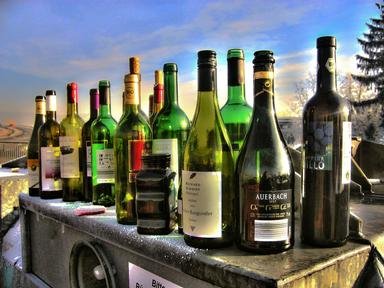Quiz Answer Key and Fun Facts
1. PORTER got its name from London streetgoers and boathands, and that profession also lent itself to the names of many famous people. Perhaps the most famous Porter is American author William Sydney Porter, aka O. Henry. What is O. Henry most well-known for writing?
2. A famous children's song contains the lines "I'm a little ______, short and STOUT" and incorporates body motions like putting one's hands on one's hips. What one word is missing from the lyric?
3. PILSENERS are often considered the world's first golden beer. Which of the following items/concepts would NOT be described as golden?
4. BITTER, a type of pale ale, is also used an adjective for one of the five taste sensations. The other four are sweet, sour, salty, and umami. Umami, the least well-known taste sensation, is used as a synonym for what word descriptive of food rich in protein?
5. BOCK beers have been in use by German Catholic monks for sustenance during long fasts: they have more energy and nutrients than other types of lagers or ales. The longest fasts that the monks would endure would generally be the forty-day holiday that precedes Easter and follows Mardi Gras, given what name in English?
6. SAHTI is a Finnish ale tasting of bananas and is not well-known worldwide; however, the ancient practice of "sati" is much more fascinating. Originating in the Gupta Empire, a woman would actually burn herself on her dead husband's funeral pyre. In what religion did this outdated practice develop from the name of the goddess Sati, who burned herself after her husband Shiva was humiliated?
7. MARZEN is one name for a beer that also shares its name with one of the world's largest fairs, which occurs yearly in Munich, Germany. Sixteen days long, the event originated in 1810 and has been cancelled only 24 times in its history. What is the name of this beer-drinking festival?
8. HELLES is the common name for a pale-color lager, developed in the 1800s using pale ale brewing techniques with lager yeasts. But its name makes the mind think of a place that nobody would want to go after dying, a place that has been depicted constantly in movies, television, and especially literature. Which of these famous works of literature doesn't include a depiction of hell?
9. LAMBIC beer is unique because it isn't brewed by specific yeasts; instead, it is exposed to a wild strain grown in the Senne valley. The Senne valley, named after the small river that flows through Brussels, south of Antwerp and southeast of Brugge, is located in which European country?
10. All right, I'll relent and throw in the mandatory beer question at last. Lagers and ales are the two major types of beer. What sets them apart?
Source: Author
adams627
This quiz was reviewed by FunTrivia editor
Exit10 before going online.
Any errors found in FunTrivia content are routinely corrected through our feedback system.
